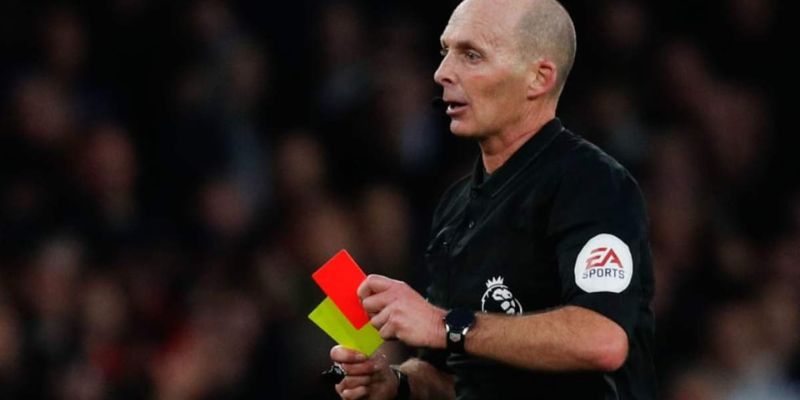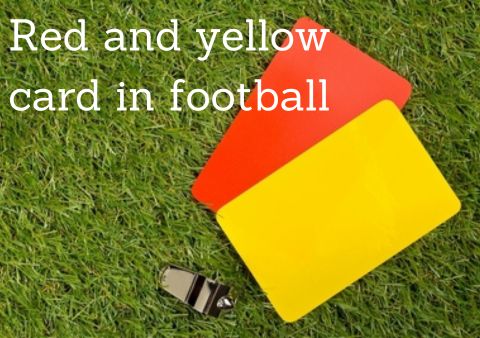As an ardent fan of football, there’s no question that you’re no stranger to this electrifying sport. But have you ever wondered why referees utilize those ubiquitous red card in football and yellow card in football? Why do those cards exist? You can learn more about football techniques, if you want to avoid getting these cards.
What is a red card in football?
A red card is a disciplinary measure given by the referee to a player for a serious offense. Resulting in the player being immediately sent off the field.
How does a player receive a red card?
A player receives a red card when the referee deems their action to be a severe violation of the rules. Typically involving reckless or dangerous behavior.
What is a yellow card in football?
A yellow card is a cautionary measure given by the referee to a player for a less serious offense or misconduct.
Can a player receive multiple yellow cards in a match?
Yes, a player can receive multiple yellow cards in a match. If a player receives a second yellow card, it will result in a red card, and the player will be sent off.
Can a red or yellow card decision be overturned after the match?
Generally, red and yellow card decisions cannot be overturned after the match. However, in some cases, if a mistaken identity is proven, the card may be transferred to the correct player or rescinded altogether.
While these methods are crucial in helping regulate matches through disciplining players on the field, comprehending their usage can sometimes be perplexing. This article aims to ensure these cards are clear and explain their purpose entirely.
Red card in football and yellow card in football
It should be noted that receiving either yellow and red cards in soccer can have severe ramifications during playtime. Yellow cards indicate unsportsmanlike conduct or incredibly aggressive fouls.
Suppose two yellow cards are accumulated within one match. In that case, an immediate red card will be issued. Resulting in ejection from playtime entirely and leaving teams shorthanded for the remainder of the game.

Players who receive a yellow card should note that it serves as a warning to exercise greater discipline moving forward during playtime. Further poor conduct or dissent will often result in issuing a more severe red card which will remove players altogether, causing the team to be numerically disadvantaged in gameplay.
With everything considered, players must maintain caution throughout all games and avoid further infractions. When a red card is presented, players must leave the field without being replaced, leaving their team disadvantaged. Referees issue red cards when they’ve determined that the action or foul was egregious enough to warrant immediate removal from play altogether.
Yellow and red cards in soccer additional consequences
Red and yellow cards in football also imply additional consequences beyond the current game. Accumulating several red cards over a season can result in suspension for other rounds. Players often receive automatic one-match bans after receiving a red card.
For major offenses, players can face possible multi-game suspensions with fines being awarded. They have an impact on team tactics and style of play. One outcome is the possibility of less aggressive challenges from players due to fear of getting cautions or being sent off.

Another is that teams may take fewer offensive chances to avoid becoming vulnerable to counterattacks if they down a player themselves. Coaches adjust strategies to account for the reality of being shorthanded.
In general, red and yellow cards in football significantly affect the match, and potential future consequences serve as Exhibit A. Players, clubs, and even fans must be aware of how their own actions/decisions plus received cards can influence the game through the disciplinary system—receiving cards is something to be avoided whenever at all possible.
The Case for Red and Yellow Cards: Why Use Them?
To ensure order and fairness on any playing pitch, referees issue red and yellow cards to offenders who commit fouls or unsporting behavior receiving them—which results in penalties to both offender and their club too.
As a player, when you get a yellow card, it implies a caution occasioning misconduct—being issued with your second yellow card in the same match results in a red card and hence ejection. Some instances upon which players might receive a yellow card include: Hitting, tripping, pushing, or pulling opponents and deliberately handling the ball – dissent towards the referee.

Football red card rules
A severe offense committed on-field results in getting shown red cards. A red card in football means immediate ejection from football games while playing. The following are football red card rules infractions severe enough to warrant direct issuance of Red Cards:
Violent conduct, such as hitting or kicking opponents
Denying an obvious goal-scoring opportunity via foul play
Using offensive, abusive language and gestures
Notably, receiving red cards from multiple accumulated offenses over a season leads to suspensions from other games.

Leave immediately once shown a red card, as substitutions are not allowed. As the team suffers one less player for the rest of the match, it may impact their overall performance negatively. Thus, it’s crucial to exercise the utmost discipline while playing. And avoid earning Red Cards or other disciplinary actions governed by football regulatory bodies.
A severe consequence: Red cards
Football is a sport wherein receiving either a red or yellow card can prove consequential for a team’s performance. When one collects two yellow cards during one game, they are granted an automatic red card. Signaling their removal from the remainder of the match while prohibiting them from playing further in tandem with their teammates. Consequently leaving them unable to be replaced by any other player during playtime.
Additionally, player performances may be hindered due to the continued accumulation of such cards throughout multiple games over an extended period, leading them toward possible exclusion from future matches ahead indefinitely.
For athletes participating in this sport to successfully avoid such unfavorable outcomes. Which could limit team success, coaches train their players to use safer or non-violent tactics when challenging or tackling rivals. Hence, as not land sensitive fouls and recidivate unnecessary aggression resulting from short temperament towards unfair calls given frequently.

Season-long disciplinary accumulations can make planning ahead tricky for coaches, compromising success rates significantly. The responsibility ultimately lies upon every player on every team involved since caution towards these potential hazards ultimately determines overall progress outcomes, requiring continuous consciousness of possibilities impacting active sports life.
In summary, a red card in football is the harshest disciplinary action a referee can take against a player during a match to punish unacceptable behavior and maintain proper conduct. The consequences are severe, so players must never forget the rules and actions.
Yellow Card meaning in football
So, what’s yellow card meaning in football? Warning football players about unsporting behavior on-field without outright dismissal entails issuing a yellow card in football by match officials.
Referees deem fouls, such as tripping, pulling, or pushing an opponent, deliberate ball handling, showing dissent towards the referee pretty common through words or actions, delaying restarts, or failing to respect required distances as eligible for caution.

For each yellow card issued, referees maintain player records. A second warning during a match turns into a red card with ejection for unsporting behavior or deliberate foul play. Repeated yellow cards across competitions may lead to suspensions from future games for players.
Players must be aware of rules while refraining from reckless challenges or dissent to avoid attracting yellow cards. Due to unsporting play, meriting cautionary warnings, punishments, and potentially severe consequences later on.
Conclusion
Football enthusiasts must comprehend the regulations surrounding red and yellow card in football without exception. Knowing how referees penalize players for fouls, unsportsmanlike conduct, and other infringements aids in avoiding courses of action that could jeopardize one’s team.

It is wise for both fans and players to familiarise themselves with all official football laws. So they may recognize when yellow or red cards are issued by referees as cautions or sending-off offenses, respectively.
During any football game you watch, it’s crucial to observe how referees leverage these disciplinary measures towards. Ensuring fair play throughout proceedings, ensuring that safety negates fair play as both unite in providing an enjoyable experience viewers look forward to repeatedly.



